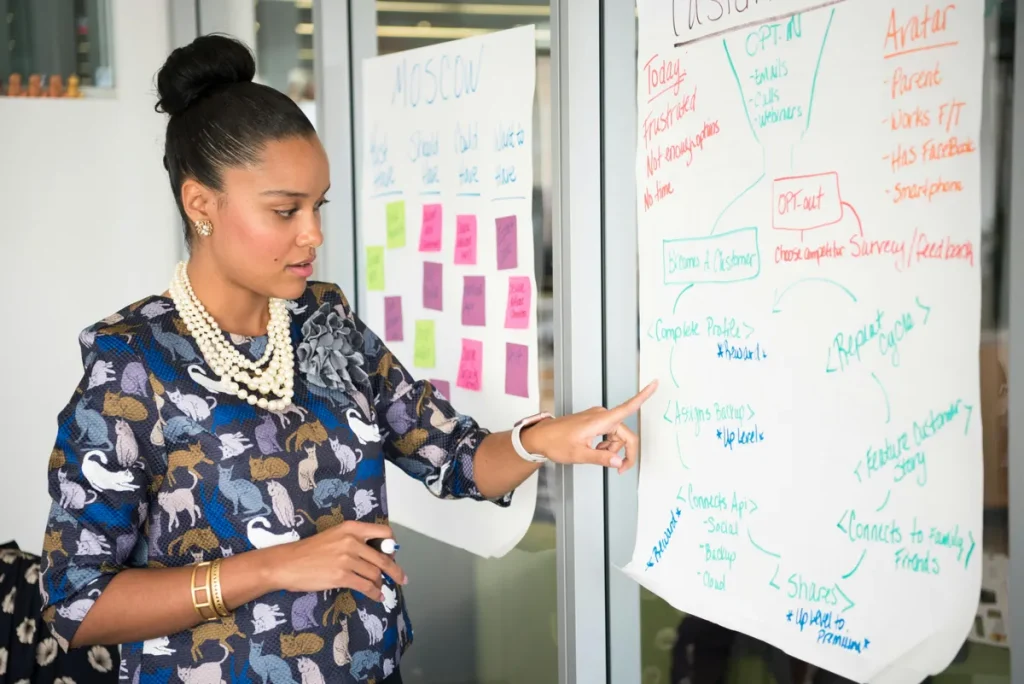
Presentations in the modern workplace must be both instructive and interesting. Whether you are delivering updates or an idea, a good presentation counts. Modern viewers need confident delivery of clarity, images, and engagement. Five main components of a good presentation are investigated in this piece. These concepts will enable you to develop presentations either in person or online that really connect.
Explicit and Targeting Material
Simplify and straightforward the material of your presentation. Like outlining a project or convincing a customer, start with a specific objective. Arrange your arguments logically: introduction, main thoughts, and conclusion. Short language and free from jargon help to guarantee everyone understands. To keep from overloading your audience, concentrate on three to five major themes. For instance, instead of enumerating every advantage of a new tool, emphasize its ones. Simplify extraneous details to keep on target. Get your speech ready so it fits the usual 15 to 20-minute time restriction. Summarize your starting objective on a slide or note. Maintaining material targeted helps you to provide a message that is simple to understand, thereby enhancing the impact and nature of your presentation.
Interesting Visual References
Visuals give your presentation life. Back up your point of view using presentations, graphs, or photographs. Keep presentations neat; apply one concept on each slide with little text. Select strong, legible typefaces and top-notch photos. A graph could, for instance, better depict sales patterns than words. Including nonprofit video production in your presentation of a project can help to depict your cause by including actual tales and outcomes vividly. Steer clear of clutter—that is, too many colors or animations—that might divert viewers. Tools for creating professional graphics include presentation software. Change slides for every audience, the same as you would customize data for a certain team. To maintain flow, practice fluidly moving between slides. Visuals should enhance, not replicate, your spoken words. Check your settings specifically for virtual meetings to prevent technical problems. Captivating images assist your viewers to remain concentrated by grabbing their attention and simplifying difficult concepts. Thoughtful use of them results in a presentation that is both professional and unforgettable, therefore making a powerful impression in the workplace.
Confident and Realistic Transmission
Your delivery determines the landing point of your message. Talk precisely and at a consistent speed. Get your speech to seem natural rather than robotic. To engage your audience, make eye contact—personal or via a camera. Point to a slide to underline points with motions. Change your tone to keep listeners interested; stop for emphasis or raise your voice for intensity. Be yourself; sincerity fosters confidence. To connect to your team, for instance, tell a quick narrative about a project’s difficulty. Get ready to remain calm by practicing difficult questions. Track a practice session to identify tendencies like too frequent “um” use. If you are tense, inhale deeply before beginning. Confident delivery helps your audience to believe your message. Presenting really guarantees confidence and involvement, therefore ensuring that your ideas speak to the modern workplace.
Interactive Audience Involvement
Get your audience engaged so they remain focused. In virtual gatherings, get opinions by running quizzes or polls. In smaller gatherings, particularly, encourage quick remarks or thoughts. Ask team members, for instance, to provide instances relevant to your subject. Establish explicit guidelines for managing involvement—like raising hands. Interaction creates a connection and breaks up lengthy presentations. If the topic veers, be ready to steer it back. Timing practice will help you to fit involvement into your slot. Use test instruments such as polling apps to prevent errors. Involvement helps your audience to feel important and increases their concentration. Steer clear of overstretching yourself; balance your major ideas. Including these points of interest makes your presentation vibrant, which promotes teamwork and keeps listeners interested in your message.
Flexible and Tech-Savvy Method
Presentations tech-ready are demanded in the modern business. For seamless slides or video conferences, use dependable tools. Before beginning, test your setup and review the internet, audio, and images. For tech breakdowns, have a backup strategy with handwritten notes. Shorten presentations for virtual viewers or change for in-person room size adaptation. For back-row viewers, for instance, use bigger fonts. Know your audience—create material specifically for new hires or executives. Get good at smoothly moving between tools or displays. If remote, be sure your backdrop is businesslike. If problems arise, be cool; accept them and move on. Tech knowledge shows initiative and earns respect. Keep picking up new tools to keep current. Embracing tech and adaptability helps you to provide a professional presentation that satisfies contemporary workplace standards, thereby keeping your audience interested.
Conclusion
In a modern company, a good presentation educates, interacts, and adapts. Well-written material guarantees that your message is simple to understand. Interesting images help concepts stay. Deliver with confidence to create connection and trust. Interactive components engage your viewers. Modern needs are handled with a tech-savvy approach. Whether in-person or online, these five components let you create presentations that inspire and convince in a boardroom or other setting.
